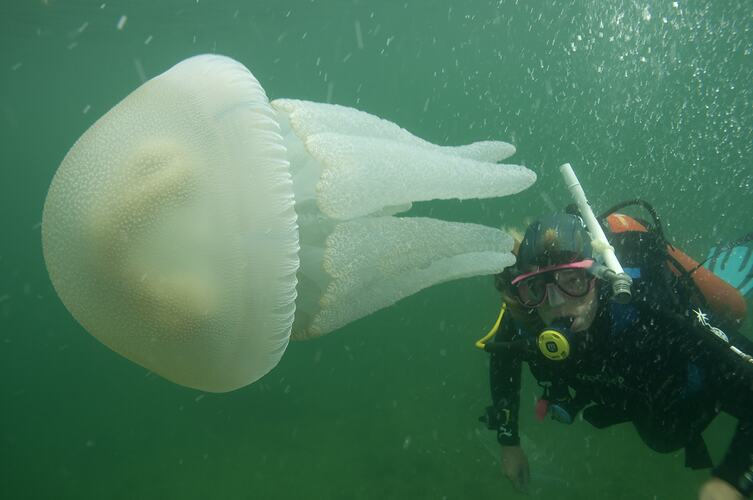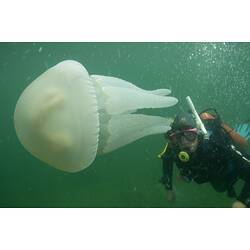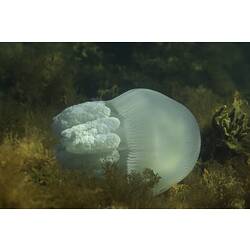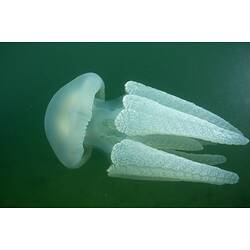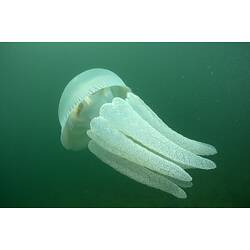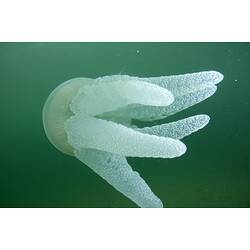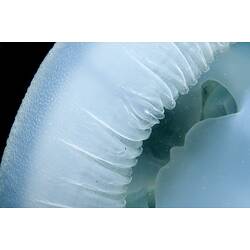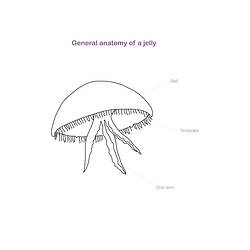General Description
Body with rounded top (bell) and eight textured arms, each arm with three "wings". Colour brown, white or pale blue. White cross inside body, visible through the bell. Bell up to 35 cm across.
Biology
Blue Blubbers often aggregate in large numbers in Victorian waters. They have no tentacles, but they do have stinging cells along the arms that help catch prey. Some individuals are known to have isopods, amphipods and/or parasitic anemones living upon them. Blue Blubbers been trialled for aquaculture and may one day be farmed for human food.
Distribution
Torres Strait and eastern Australia.
Habitat
Estuaries and open water, may drift near shore due to tide and winds.
More Information
-
Animal Type
-
Animal SubType
-
Brief Id
A jellyfish with a white cross visible inside the rounded bell and eight arms below bell.
-
Colours
Brown, White, Blue
-
Maximum Size
35 cm
-
Habitats
-
Diet
Carnivore
-
Diet Categories
Fish
-
Hazards
Although they may cause a mild sting, Blue Blubbers are not considered a significant human hazard.
-
Endemicity
-
Commercial
No
-
Conservation Statuses
CITES: Not listed, FFG Threatened List: Not listed, DSE Advisory List: Not listed, IUCN Red List: Not listed
-
Depths
Shore (0-1 m), Shallow (1-30 m)
-
Water Column Locations
Midwater, Surface
-
Taxon Name
-
Scientific Author
(Quoy & Gaimard, 1824)
-
Common Name
Blue Blubber
-
Phylum
-
Class
-
Order
-
Family
-
Genus
-
Species Name
mosaicus
